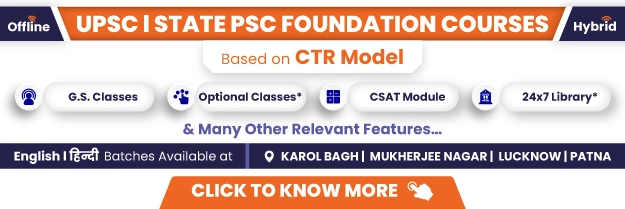Introduction
William Bentinck, the third Duke of Portland’s son, was born on September 14, 1774, in Buckinghamshire, England. His father served as the British Prime Minister. He was appointed the Governor of Madras in 1803. From 1828 until 1835, he was the Governor-General of India. During his time as Governor-General of British India, he is credited with improvements in the legal, social, and educational sectors.

Significant Reforms During William Bentinck Tenure
He is credited with major social and educational reforms in India, including the elimination of sati, the ban on women viewing cremations on Varanasi’s ghats, the eradication of female infanticide, and the outlawing of human sacrifice.
Financial Reforms
The Company was in a precarious financial situation and the exchequer was in disorder when Bentinck was appointed Governor-General in 1828. There was a million rupee gap in the state budget.
- The Governor-General was compelled to take decisive action to help the financial situation. He took the subsequent actions to achieve this: Both the number of officers on the payroll and their salaries and benefits were decreased.
- The military department’s twin battalion structure was eliminated by him. (A Batta was a stipend provided to service members.)
Administrative Reforms
Bentinck’s administrative changes show his political sagacity and sophistication.
- He eliminated Cornwallis’s provincial courts of appeal in the judicial branch, which were largely to blame for the enormous case backlog.
- Another wise Bentinck initiative was the substitution of English for Persian in the higher courts and the use of regional tongues in the lower courts.
Social Reforms
His tenure focussed on the abolition of a wide range of social evils practised in contemporary India.
- On December 4, 1829, Regulation XVII was issued, prohibiting the practice of sati. The legal system declared people who practised sati to be complicit in the crime and subject to punishment.
- The Regulation was expanded to include the Madras and Bombay Presidency in 1830.
- They were a family of thieves, as depicted in Suppression of thugs (1930). They travelled in small groups of 50 to 100 people, pretending to be business gangs or pilgrims, and they would rob and strangle innocent tourists.
Educational Reforms
The implementation of English education was a defining aspect of Lord Willaim Bentinck’s presidency.
- To give suggestions for the improvement of education, he established a committee under the chairmanship of Lord Macaulay.
- The government of India declared English to be the official and literary language in a resolution that was adopted in 1835.
Evaluation Of William Bentinck Tenure
The seven-year span was a turning point in India’s administrative changes. It began a process by which the Indian populace, which is enraged by abrupt changes, was forced to obey the British emperor and government gradually. This time period can be categorised as “benevolent administrators” in part.
- Coorg War 1834: The only territory Lord William Bentinck annexed was the Coorg. A brief but terrible war broke out between the Raja of Coorg and the British East India Company in 1834.
- Annexation of Mysore(1831): In Mysore, there was a civil uprising in the late 1820s. This was caused by either the Maharaja’s bad governance and heavy taxation or the financial exploitation of British residents. These events led to the British taking full control of Mysore in 1831.
- Cachar and Jainthai (1834): The principality of Cachar in the North East Frontier was given British protection by the Treaty of Yandabo, which was signed at the conclusion of the first Burmese War. The Raja of this tiny state was killed in 1832, but he didn’t leave behind a successor. Jaintia was one of the areas occupied by the British following the first Anglo-Burmese War. Bentinck annexed this kingdom at the people’s request.
- Punjab (Treaty of Perpetual Friendship): William Bentinck, who sensed a threat from Russian invasion, was keen to build cordial ties with both Maharaja Ranjit Singh, the ruler of Punjab, and the Amirs of Sind. Indus Navigation Treaty was concluded when the Governor-General was successful in gaining Ranjit Singh’s goodwill.
|
#PW-OnlyIAS Edge |
|
Conclusion
His social reforms eliminated ingrained wrongs in Hindu society, including the banning of child sacrifice and the elimination of Sati. Encouragement can be found in the fact that “Bentinck acted where others had talked.” He changed the country’s economy, gave Indians access to judicial positions, and outlawed thuggee—the ritual killing of robber gang members—and suttee—the burning of widows. The changes made under his administration were significant in developing a type of governance that was far more interventionist than earlier ones and involved the westernisation of Indian society and culture.
William Bentick FAQs
Q1. What was Lord William Bentick famous for?
Ans. He served as the Governor-General of India from 1828 to 1835. He is credited with major social and educational changes in India, such as the elimination of Sati, the ban on women watching cremations on Varanasi’s ghats, the eradication of female infanticide, and the outlawing of human sacrifice.
Q2. What financial reforms was Lord Bentinck responsible for?
Ans. He took the following actions:
- He cut the pay and benefits for all officers;
- He cut back on the number of police employed;
- The military department’s twin battalion structure was eliminated by him.
Due to his financial changes, the treasury had a surplus of Rs. 1.5 million at the time of his departure.
Q3. Why was Bentick called the liberal Governor-General.?
Ans. Major social and educational changes in India that are attributed to him include the elimination of Sati, the suppression of female infanticide and Thuggee, the elimination of anarchy, and the elimination of human sacrifices.













